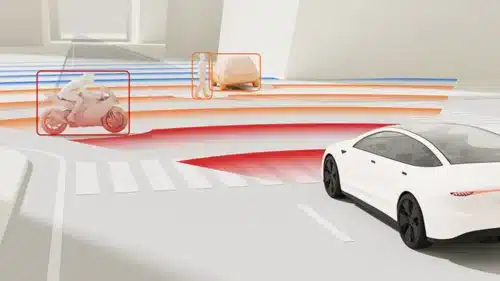The radar chip gives more speed, uses less space, supports AI, helps cars drive with fewer antennas, lower cost, and better performance.

NXP Semiconductors has introduced the S32R47 imaging radar processors, built using 16 nm FinFET technology. This third generation offers up to twice the processing power of the previous version, with better power efficiency and lower system cost. When used with NXP’s mmWave radar transceivers, power management, and networking solutions, the S32R47 meets ISO 26262 ASIL B(D) safety standards—helping prepare the auto industry for more advanced self-driving features.
A report by Yole Intelligence predicts that by 2029, about 40% of new cars will support Level 2+ and Level 3 automation, with growth in Level 4 vehicles as well. To support these developments, radar performance must improve to support key functions like piloted driving and automated parking.
Imaging radar uses detailed point cloud data to better model surroundings. This supports AI-based systems that enable safer driving in complex environments, like busy cities.
The S32R47 includes a high-performance, multi-core radar processor that supports advanced features such as better object detection and classification, including pedestrians or road debris. It also supports AI/ML-based enhancements like Direction of Arrival (DoA) processing.
Compared to other options, NXP’s solution offers similar or better performance using up to 89% fewer antenna channels. It also reduces cost, size, and power use, making it easier to integrate into cars at scale.
Some of the key features of the S32R47 include:
- 2x faster radar chip, 38% smaller size
- Supports AI for better object tracking and direction
- Uses fewer parts, works with more antennas
- Same or better performance with up to 89% fewer antennas
- Saves cost, space, and power
“The S32R47 can efficiently process three times, or more, antenna channels in real time than today’s production solutions. It enables improved imaging radar resolution, sensitivity and dynamic range – required by demanding autonomous driving use cases – while still meeting the stringent power and system cost targets set by OEMs for volume production,” Meindert van den Beld, Senior Vice President & General Manager, Radar & ADAS.
For more information, click here.







